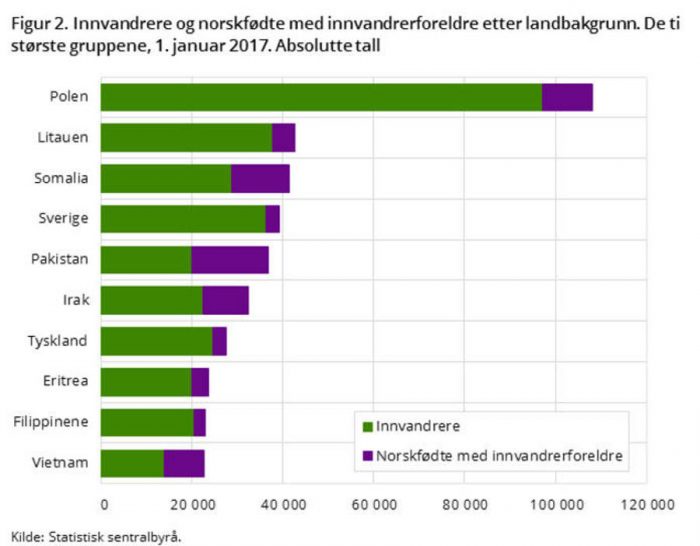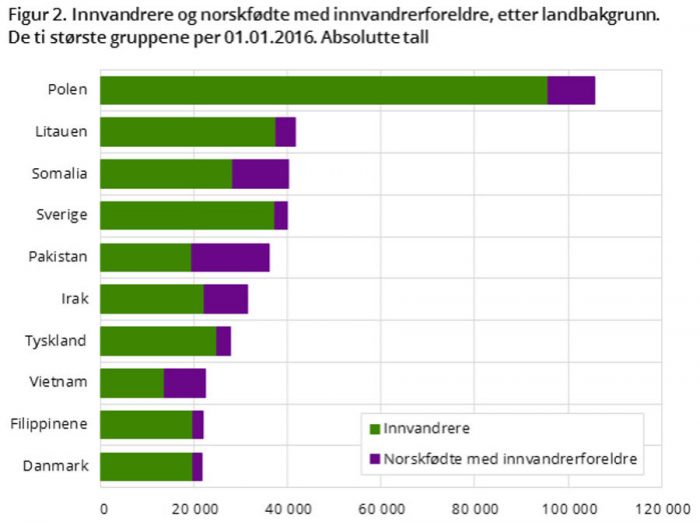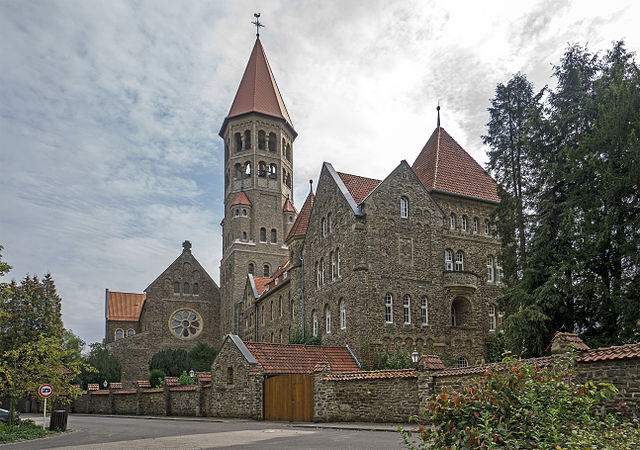Dokumentet Liturgiam authenticam beskriver hvordan oversettelsen av katolsk liturgi fra latin til folkespråkene skal skje, og det gjelder både selve messen (for alle årets dager), andre liturgier (dåp, vigsel o.a.) og bibeloversettelser (som ikke alltid trenger være katolske, men må kunne godtas av Den katolske kirke).
… The Instruction next gives a careful updated outline of the process to be followed by the Conferences of Bishops in communion with the Holy See in deciding upon full or partial introduction into liturgical use of a given language.
The Translation of Liturgical Texts
The heart of the Instruction is a fresh exposition with a reflective tone of principles that should govern the vernacular translation of liturgical texts. From the outset this section stresses the sacred nature of the Liturgy, which the translated texts must carefully safeguard.
The Roman Rite, like all the great historical liturgical families of the Catholic Church, has its own style and structure that must be respected in so far as possible in translation. The Instruction repeats the call of earlier papal documents for an approach to the translation of liturgical texts that sees it not so much a work of creative inventiveness as one of fidelity and exactness in rendering the Latin texts into a vernacular language, with all due consideration for the particular way that each language has of expressing itself. The special needs that must be addressed when making translations intended for newly evangelized territories are mentioned, and the Instruction also discusses the conditions under which more significant adaptations of texts and rites may occur, referring the regulation of these issues to the Instruction Varietates legitimae.
Using Other Texts as Aids
The usefulness of consulting ancient source texts is acknowledged and encouraged, though it is noted that the text of the editio typica, the official modern Latin edition, is always the point of departure for the translation. When the Latin text employs certain words from other ancient languages (e.g., alleluia, Amen, or Kyrie eleison), such terms may be retained in their original languages. Liturgical translations are to be made only from the editio typica of the Latin and never from other translations in turn. The Neo-Vulgate, the current Catholic version of the Latin Bible, should be employed as an auxiliary tool in preparing biblical translations for use in the Liturgy.
Vocabulary
The vocabulary chosen for liturgical translation must be at one and the same time easily comprehensible to ordinary people and also expressive of the dignity and oratorical rhythm of the original: a language of praise and worship which fosters reverence and gratitude in the face of God’s glory. The language of these texts is, therefore, not intended primarily as an expression of the inner dispositions of the faithful but rather of God’s revealed word and his continual dialogue with his people in history.
Translations must be freed from exaggerated dependence on modern modes of expression and in general from psychologizing language. Even forms of speech deemed slightly archaic may on occasion be appropriate to the liturgical vocabulary.
The liturgical texts are neither completely autonomous nor separable from the general context of Christian life. There are in the Liturgy no texts that are intended to promote discriminatory or hostile attitudes to non-Catholic Christians, to the Jewish community or other religions, or which in any way deny universal equality in human dignity. If incorrect interpretation arises, the matter should be clarified, but this is not primarily the business of translations. The homily and catechesis are there to help fill out and explain their meaning and to clarify certain texts.
Gender
Many languages have nouns and pronouns capable of referring to both the masculine and the feminine in a single term. The abandonment of these terms under pressure of criticism on ideological or other grounds is not always wise or necessary nor is it an inevitable part of linguistic development. Traditional collective terms should be retained in instances where their loss would compromise a clear notion of man as a unitary, inclusive and corporate yet truly personal figure, as expressed, for example, by the Hebrew term adam, the Greek anthropos or the Latin homo. Similarly, the expression of such inclusivity may not be achieved by quasi-mechanical changes in grammatical number, or by the creation of pairs of masculine and feminine terms.
The traditional grammatical gender of the persons of the Trinity should be maintained. Expressions such as Filius hominis (Son of Man) and Patres (fathers) are to be translated with exactitude wherever found in biblical or liturgical texts. The feminine pronoun must be retained in referring to the Church. Kinship terms and the grammatical gender of angels, demons and pagan deities should be translated, and their gender retained, in light of the usage of the original text and of the traditional usage of the modern language in question.
The Translation of a Text
Translations should try not to extend or to restrict the meaning of the original terms, and terms that recall publicity slogans or those that have political, ideological or similar over-tones should be avoided. Academic and secular style-books on vernacular composition should not be used uncritically, since the Church has distinctive things to say and a style of expression that is appropriate to them.
Translation is a collaborative effort that should maintain continuity as much as possible between the original and vernacular texts. The translator must possess not only special skills, but also a trust in divine mercy and a spirit of prayer, as well as a readiness to accept review of his work by others. When substantial changes are needed to bring a given liturgical book into conformity with this Instruction, such revisions must be made all at once so as to avoid repeated disturbances or a sense of continual instability in liturgical prayer.
Scriptural Translations
Special consideration is given to the translation of the Scriptures for use in the Liturgy. A version should be developed which is exegetically sound and also suitable for the Liturgy. Such a translation should be used universally within the area of a single Bishops’ Conference and be the same for a given passage in all parts of the liturgical books. The aim should be a distinctive sacred style in each language that is consonant, as far as possible, with the established vocabulary of popular Catholic usage and major catechetical texts. All doubtful cases regarding canonicity and the ordering of verses should be resolved by reference to the Neo-Vulgate.
Concrete images found in words referring in figurative language that speaks, for example of the «finger», the «hand», the «face» of God, or of his «walking», and terms like «flesh» and the so on, should usually be translated literally and not replaced by abstractions. These are distinctive features of the biblical text that are to be maintained.
Other Liturgical Texts
Norms for the translation of the Bible as used in the Liturgy apply also in general to the translation of liturgical prayers. At the same time it must be acknowledged that while liturgical prayer is formed by the culture which practices it, it is also formative of culture so that the relationship is not merely passive. As a result, liturgical language can be expected to diverge from ordinary speech, as well as to reflect its better elements. The ideal is to develop a dignified vernacular fit for worship in a given cultural context.
Liturgical vocabulary must include the major characteristics of the Roman Rite, and should be drawn from patristic sources and harmonized with biblical texts. The vocabulary and usage of the vernacular translation of the Catechism of the Catholic Church should be respected as far as this is feasible, and the proper distinctive terms should be used for sacred persons or things, rather than employing the same words as for the persons or things of everyday domestic life.
Syntax, style and literary genre are also key elements to be considered in rendering a faithful translation. The relationship between clauses, especially as expressed through subordination and devices such as parallelism, must be accurately conveyed. Verbs must be translated precisely in respect of person, number and voice while some latitude will be needed in rendering more complex syntactical structures.
A prime consideration should be the fact that liturgical texts are intended to be publicly proclaimed aloud and even sung.
Particular Types of Texts
Specific norms are then given for the translation of Eucharistic Prayers, the Creed, (which is to be translated in the first person singular: «I believe … «), and the general ordering and layout of liturgical books and their preliminary decrees and introductory texts. This is followed by a description of the preparation of translations by Bishops’ Conferences and the processes to be used for obtaining the approval and confirmation of liturgical texts from the Holy See. The present special requirements of papal approbation for sacramental formulae are reaffirmed, as is the insistence on the desirability of a single translation of the Liturgy, especially the Order of Mass, within each language group. …






 An important new book has appeared that carefully evaluates Francis’s pontificate, and provides something the pope—for all his good deeds—often hasn’t: context and clarity.
An important new book has appeared that carefully evaluates Francis’s pontificate, and provides something the pope—for all his good deeds—often hasn’t: context and clarity.
